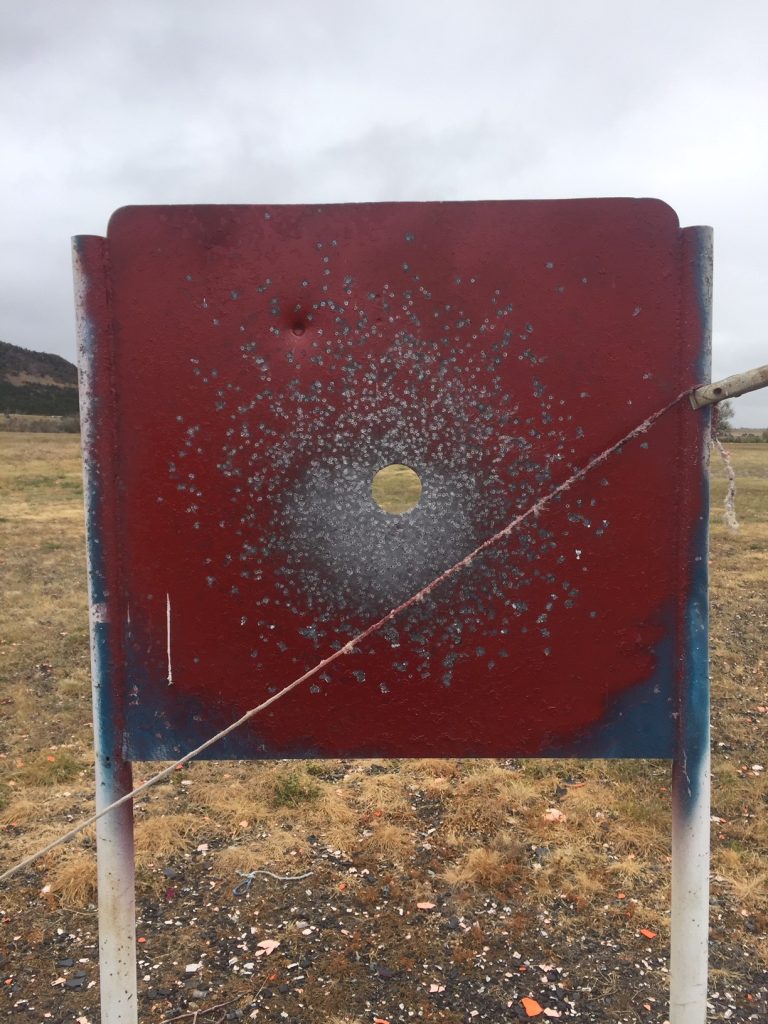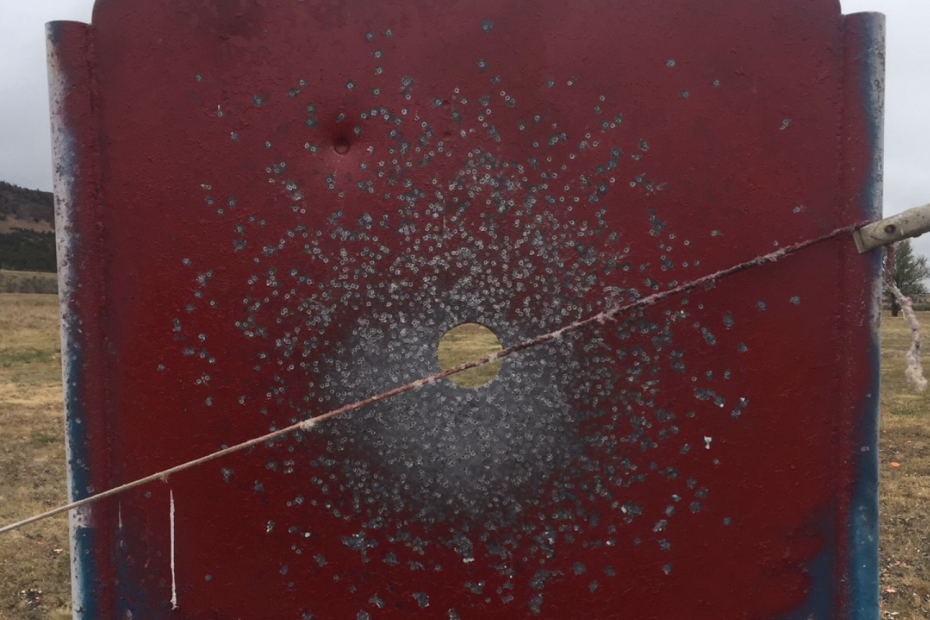When you shoot most guns, you align the sights so the bullet impacts an exact point—an example being the 10 ring on a paper target. But when you shoot a shotgun you don’t choose an exact point that you would like your shot to go, you choose an area. This desired area that you choose to put the densest part of your shot is called patterning. Patterning is essentially “sighting in” a shotgun for your personal use and what you intend to use the gun for. When you hear people say that a shotgun has to shoot where you look this is what they are talking about. Some patterning has to do with the fit of the gun to your face, but we will address that later.
For the purposes of this topic, patterning refers to where you would like to break a target or bird above the shotgun, using the height of the comb to change where the gun shoots. This is also referred to as the point of impact or point of aim. If this is not individualized to the way that each individual shooter likes to see a target break, it will lead to very inconsistent results. In hunting and clay target sports there are four basic patterns that most shooters tend to like: 50/50, 60/40, 70/30 and 100. These reference the percent of the pattern that shoots below the shooters aim and what percent shoots above the shooters aim.
50/50 is often referred to as “flat” shooting. With this type of pattern, half the pellets hit below the point of impact and half hit above. This is a very instinctive way to shoot a shotgun, and the shooter will often describe covering targets up when they break them. The shooter often starts the move from behind and tracks down the targets line in order to break the target. This type of pattern is common in hunting—it allows the hunter to have a quick and natural response to a bird in order to hit it. This pattern is also common in trap, skeet, and sporting.

The 60/40 pattern is probably the most common pattern that we see in clay target shooting. With 60% of your pattern above the barrel and 40% below the barrel, this allows the shooter to have a very effective pattern on both wide swinging targets and straight away and quartering. This pattern also can be effective in hunting, especially when presented with crossing birds. The benefit of this pattern is that it allows the shooter to see the majority of the targets break above the barrel. The downside to this pattern is that if the target lines are not consistent it takes away some of the shooters ability to come down to a target due to the point of impact.

The 70/30 pattern is getting away from the hunting side of shotgunning and coming totally into the clay target sports. With this pattern type, the shooter should always see the bird break above the gun. Some shooters prefer this method because it allows them to see the target through the entire shot and shoot a spot on the target instead of covering it up. This pattern is very common in American Trap, where most shooters hold a high gun and want to keep the range of motion to a minimum. You may also see this in a few sporting clay shooters at the higher level. The upside of this pattern is that it allows the shooter to see the entire target throughout the shot process. This allows the shooter to make slight adjustments along the target line through the shot. The downside is that in some cases the shooter can lose the relationship to the barrel and become lost when trying to place a shot.

The 100% pattern is shot almost exclusively in the American trap game. When you shoot a target with this pattern you will almost see a gap between the barrel and the target when you pull the trigger to place the shot. This type of pattern can be quite effective in this game, and if you learn it well it can be adapted to other games as well. The downside is that it takes away the shooter’s versatility when moving to a target. It can be hard to place a gun that shoots 100% high on a diving or rising target that you don’t anticipate.

Now that we have looked at the basic types of patterns, you might be asking how I pattern a shotgun. The correct way to pattern a shotgun is on a pattern board. This is a large sheet of metal, which you can paint. These are frequently found at most gun clubs. Start with placing a black dot or target that you can shoot at on the board. Then take a piece of string and connect it across the target to a chair or other object to create a line. This is done so that the shooter can follow a line to the target and pull the trigger. Patterning should always be done with the gun in motion because it gives the most realistic scenario to shooting a moving target.
Shoot at least 3 shots at the target with a moving gun to give you a solid pattern to look at. At this point, you can see where the majority of the pattern is hitting and you can adjust the comb up or down in order to achieve the desired pattern. Do this once at 20 yards and then move back to 35 and shoot a three shot group again. This will show you what the pattern looks like at close and far distances
This is a video of my teammate and two-time Olympic Bronze medalist Corey Cogdell-Unrein showing how to shoot a pattern board with a moving gun.
As with anything, there are exceptions to every rule. I know some very talented and successful sporting clays shooters that shoot almost 110% high, they have just practiced at it long enough to be confident with that type of pattern. As always with practice and a lot of shells through the barrel, any pattern can be made to look good to your brain. But when you first start out the important thing is to pick the pattern that seems most natural to you and your eyes, keep in mind that these can and will change from time to time.
